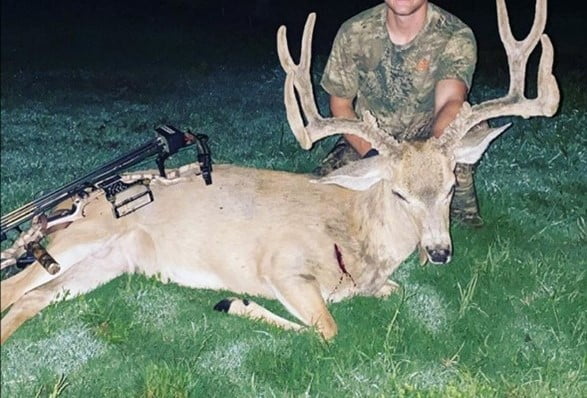
Every hunting season, hunters get lost in the woods, and while most escape no worse than tired, chilled and hungry, the hazards of being lost in Idaho’s woods shouldn’t be underestimated.
Hunters can take precautions and prepare for an unexpected situations in the woods.
Know the area you’re hunting
Always be conscious of your surroundings, prominent points, river or creek drainages, and occasionally turn around and look behind you so you will remember what it looks like when you’re coming back. If you’re on a trail, don’t hesitate to put a temporary marker at intersections. Things can look different on your return, especially if you return in the dark.
Don’t rely solely on electronics
Devices like GPS, cell phones and two-way radios are handy, but dead batteries and other malfunctions render them useless. A map and compass are low tech and less likely to fail, but you also have to know how to use them.
Tell someone your plans and set a check-in time
Often hunters are out longer than expected, especially when they are pursuing big game animals far from a road. You may want to set an absolute deadline and have someone who can alert the authorities if you haven’t returned, or contacted someone by that time. Ditto for your hunting partner. Hunters often get separated, so set up a rendezvous time and place and decide in advance when a third party will seek help if you or your partners do not return in time.
Watch for extreme weather changes
You’re more likely to get lost or turned around in poor visibility when it’s raining, foggy or snowing, which are also conditions when it’s potentially more hazardous to be lost in the woods. Cold, wet weather can mean the difference between an uncomfortable situation and life-threatening one. Remember even on clear days temperatures can change dramatically. A warm, sunny afternoon can quickly drop to subfreezing after dark, and daily temperature swings of 30 to 40 degrees are fairly common during fall.
Dress for, or carry clothes, for the worst weather you’re likely to encounter
Daily temperatures can swing 20 to 40 degrees between day and night during fall. It’s also common to quickly go from warm and sunny to raining or snowing. Dressing in layers is a good way to account for weather changes, and wearing a daypack means you can stash clothes when they’re not in use and keep them handy when you need them.
Avoid cotton clothing, which is comfortable when dry, but provides no warmth when wet. Modern, synthetic fabrics will insulate even when damp or wet and will typically dry faster when they get wet. They are more comfortable in nearly all conditions than cotton. Wool is also better than cotton, and modern merino wool is itch-free and comfortable in a wide range of temperatures.
Be prepared to build a fire
Whether matches, lighter or other devices, carry a fire starter that’s weatherproof, and it never hurts to have a backup. Know how to start a fire in all weather conditions, but remember cold weather doesn’t end fire season, so never leave a fire that’s not completely extinguished.
Bring a flash light or headlamp and extra batteries
They’re valuable for navigating in early mornings or after dark and keep you from getting lost, as well as just being handy for a variety of purposes.
If you get lost, warmth, shelter and water should be your priorities
You can go days without food, but you have to stay warm and hydrated. You’re not going to starve if you’re out longer than anticipated, but it’s never a bad idea to carry extra food with you. Commercial survival kits provide most of the essentials, but many are overkill.
Think about exactly what you would want for an extended stay in the woods and keep those items with you at all times. If you get lost, admit it to yourself and prepare to spend the night out. Build a fire for warmth and set up a shelter. Wandering around will make it harder for search and rescue personnel to find you. It also fuels your anxiety, preventing you from thinking clearly and making good decisions.
Don’t forget your vehicle and ATV
Have your vehicle ready for the backcountry and prepared for minor breakdowns, such as flat tires or dead batteries. A separate survival kit for your vehicle is a good idea.
Keep a dry set of clothes in your vehicle
This isn’t necessarily a survival matter, but being soggy and wet can range from uncomfortable to miserable. Changing into warm, dry clothes for the drive back to home or to camp is a big bonus for a small amount of effort.
